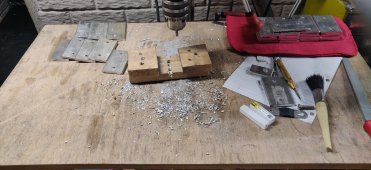Ceefiveceefive
New Member
- Joined
- Sep 28, 2019
- Messages
- 94
Greetings!
I'm thinking about making my own busbars for my three EG4 48V 100Ah server rack batteries. I am wanting to buy local from a Lowes or Home Depot as it will take weeks for copper bars to arrive where I live if I order online.
1. It was suggested that I can crush copper pipes flat to form busbars. Someone else said that would make an inferior version.
2. Can aluminum bars be an adequate substitute for up to 300Ah?
I'm thinking about making my own busbars for my three EG4 48V 100Ah server rack batteries. I am wanting to buy local from a Lowes or Home Depot as it will take weeks for copper bars to arrive where I live if I order online.
1. It was suggested that I can crush copper pipes flat to form busbars. Someone else said that would make an inferior version.
2. Can aluminum bars be an adequate substitute for up to 300Ah?



